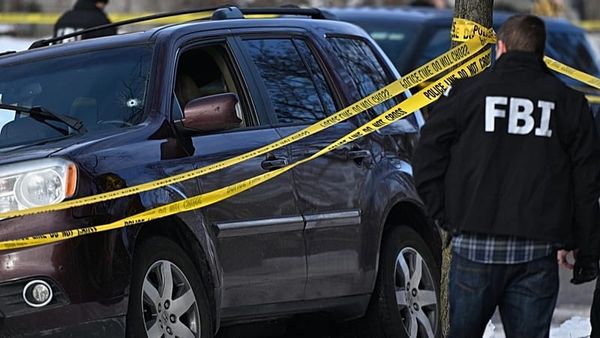
A hospital has been “inundated” with cases of people suffering from acute behavioural disturbance since so-called legal highs came on to the scene, an inquiry has heard.
Dr Richard Stevenson, a consultant in emergency medicine at Glasgow Royal Infirmary, said someone with acute behavioural disturbance (ABD) would typically be shouting and delirious, with a high temperature and may be violent.
The Sheku Bayoh inquiry heard ABD, previously known as excited delirium, is an “umbrella term” that should not be considered a diagnosis or syndrome but is used to give a clinical picture with a variety of features and causes.
Laura Thomson, lead junior counsel to the inquiry, read a medical guideline written by Dr Stevenson which says ABD is “an acute life-threatening condition and the important thing is to get sedation in as fast as possible”.
Mr Bayoh, 31, a father-of-two, died after he was restrained on the ground by six police officers in Kirkcaldy, Fife, on May 3, 2015.
The possibility of excited delirium has been discussed previously in the inquiry, however Dr Kerryanne Shearer, the pathologist who examined Mr Bayoh after he died, dismissed this as a significant cause of death because it is a psychiatric condition, rather than one that can be diagnosed through a post-mortem examination.
She confirmed Mr Bayoh’s death as a “sudden death in a man intoxicated by MDMA and alpha-PVP whilst being restrained”.
Dr Stevenson, lead medical adviser to Police Scotland, said he has been involved in the care of at least 10 patients with ABD at the hospital over the last 10 years, and his department sees around one case every fortnight, the majority of which are men.
The inquiry heard around 80% of cases of ABD brought to the hospital have been in contact with police before they arrive.
He said: “It only really started becoming an issue when the legal highs came on to the scene, or novel psychoactive substances.
“We never really had any experience of ABD and then the legal highs came on board and we were inundated with people with abnormal behaviours, so probably around 2015/2016.”
Ms Thomson said this amounted to around 26 cases per year over the past eight years, and she asked how many of these patients had died.
Dr Stevenson replied: “We’ve had probably four or five that have died due to multi-organ failure.”
Asked to describe what happened in these cases, he said: “When they come in to us they are lying and sometimes not moving at all, but their bodies are rigid.
“They are extremely hot to touch and often we have to get fluids in as fast as possible, but their kidneys and liver have been severely damaged by the ongoing agitation and the high temperature before they come to hospital and then even though we try to resuscitate them, they unfortunately don’t make it.”
He said the other patients recovered.
Legal highs, also referred to as new psychoactive substances, are substances which mimic the effects of drugs such as ecstasy and cocaine.
Dr Stevenson told the inquiry dealing with a typical case of ABD can be “challenging” for medical staff and can be “frightening” as the patient may be violent.
He told the inquiry typical treatment would be to sedate the patient, often using ketamine, which would be administered as an intramuscular injection.
Dr Stevenson said if police are present, they may help to restrain the patient but only medical staff administer the injection.
The inquiry, which is investigating the circumstances of Mr Bayoh’s death and whether race was a factor, continues before Lord Bracadale in Edinburgh.







